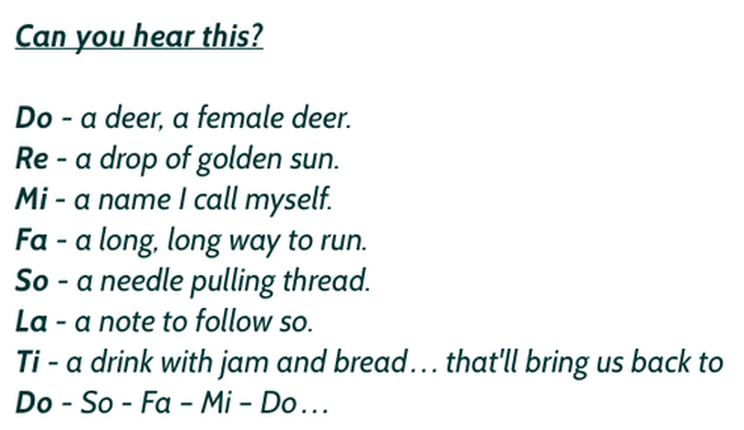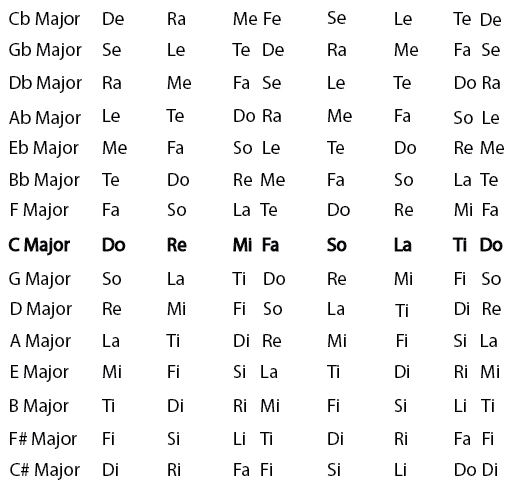|
When someone claims to have "Perfect Pitch" -- it's perfectly ok to say, "I'm Sorry!" These musicians can experience unique problems in their early studies of music. What we really desire to possess is "Relative Pitch!" This is something that can be learned through the practice and study of Solfege Syllables. Beethoven, Mozart, and any composer worth their salt did not require the keyboard to compose a melody. They developed their own ‘adult’ version of this children’s song – and they did not, merely, listen to it in their heads… they felt the many combinations of tones resonate within their bodies. You may have thought this ability to be beyond you, but if you can hear this song in your head; you have the same raw material to develop the skills they had. Diligent study of this organon will allow you this kind of ability… and more. Diatonic Chromaticism If you’ve studied music for a while, you have surely learned about the diatonic key center demonstrated in our ‘do re mi’ song. You may have been taught that all tones that are not in a particular Major Scale are considered to be chromatic – and therefore – non-diatonic. While this is a true statement, taken by itself – let’s build all 15 Major key signatures using only the solfeggio that belongs to a single tonal key center: the tonal key center of ‘C.’ From this perspective – we shall see every single chromatic tone included on our palette -– both, sharped and flatted solfege syllables. Taken from the book: 'What Does This have To Do With Music?' -- By Ben Higgins |


